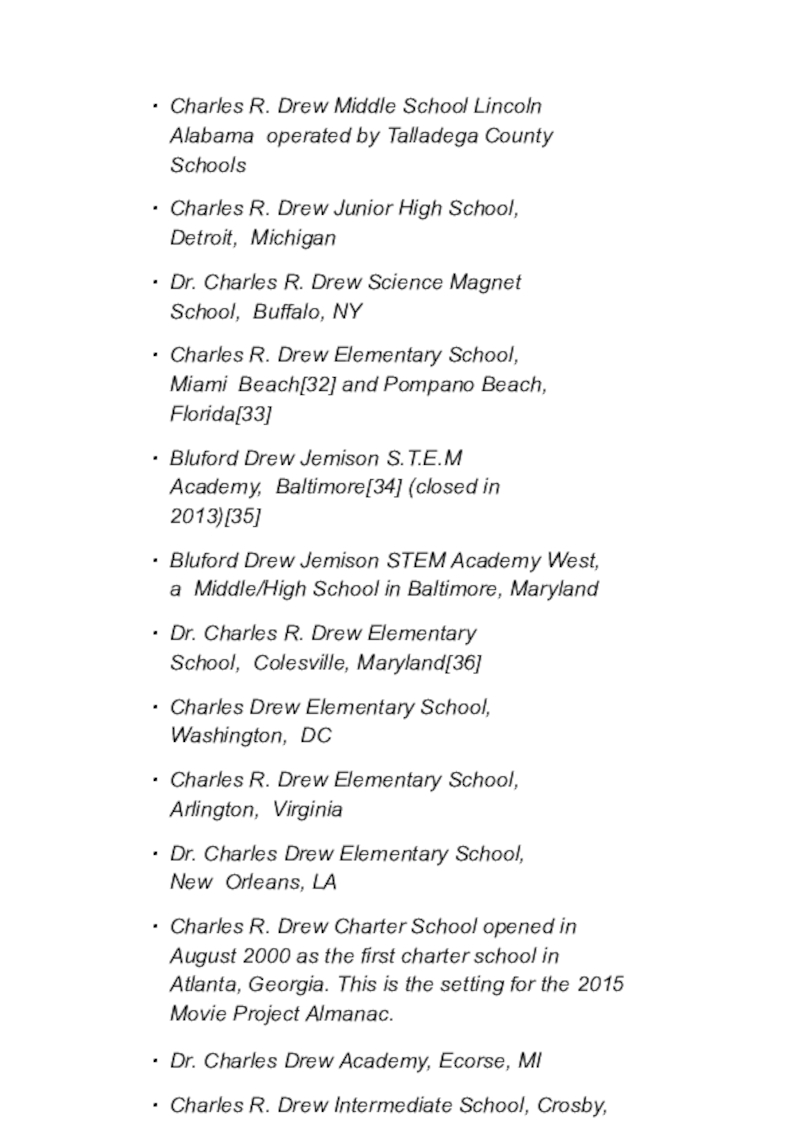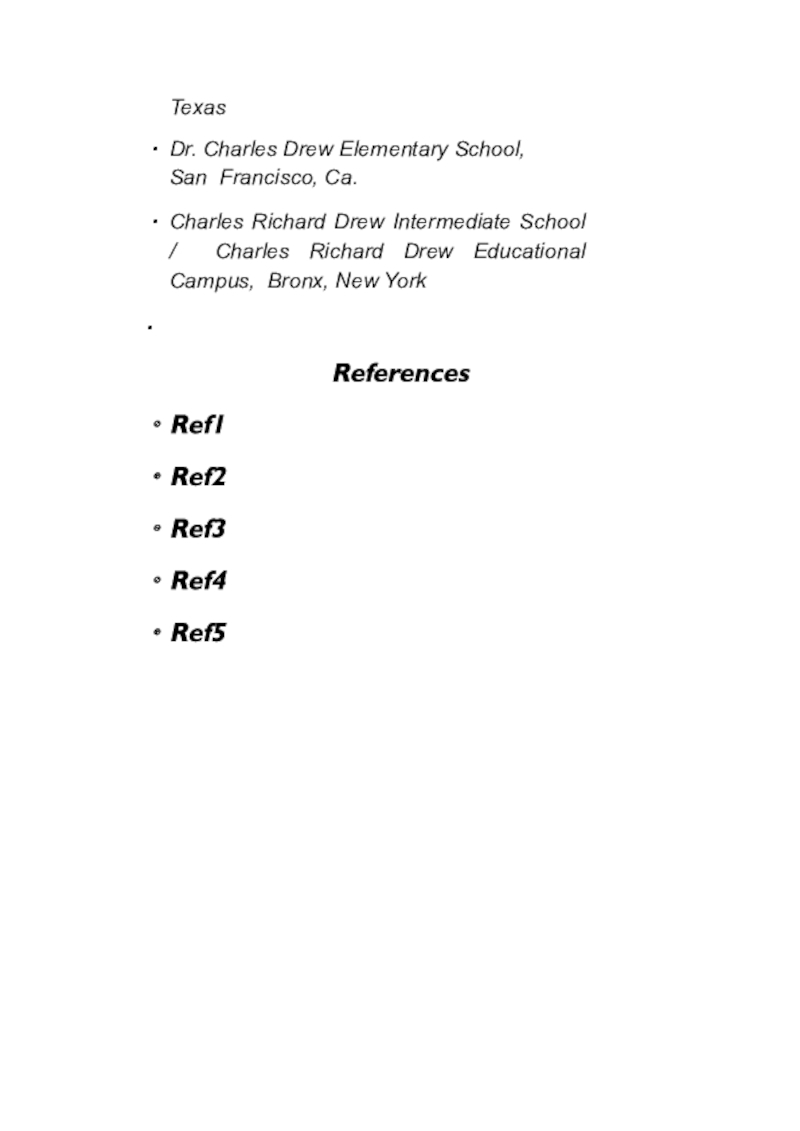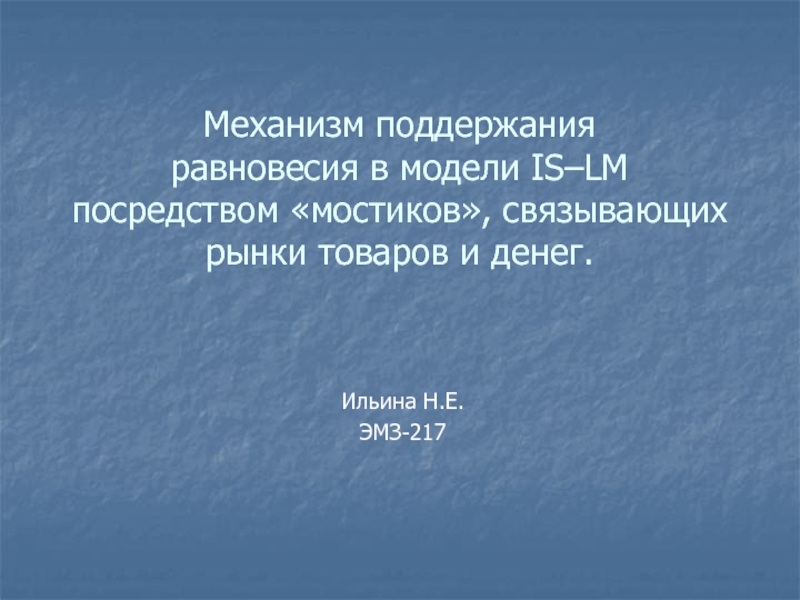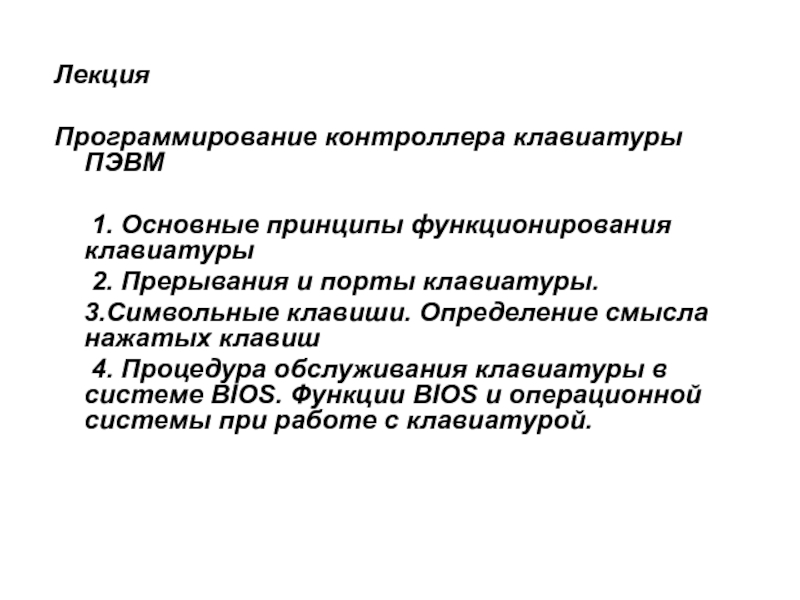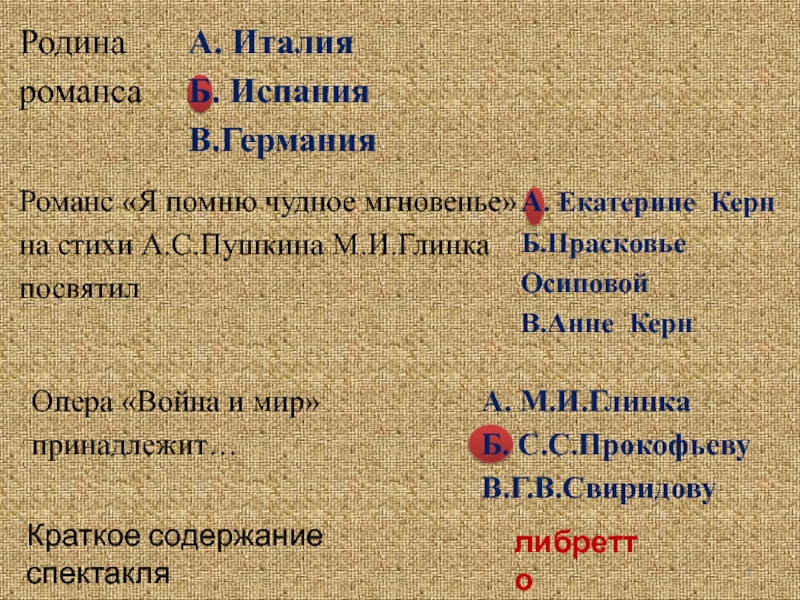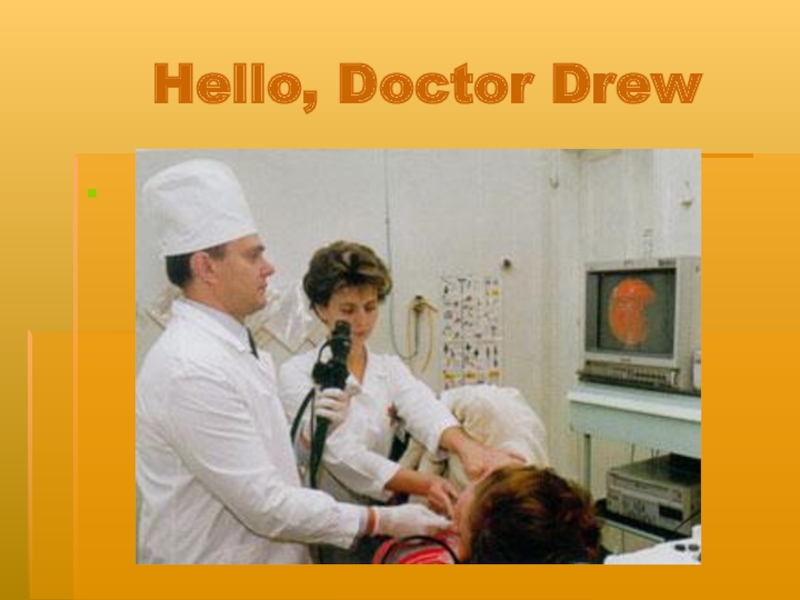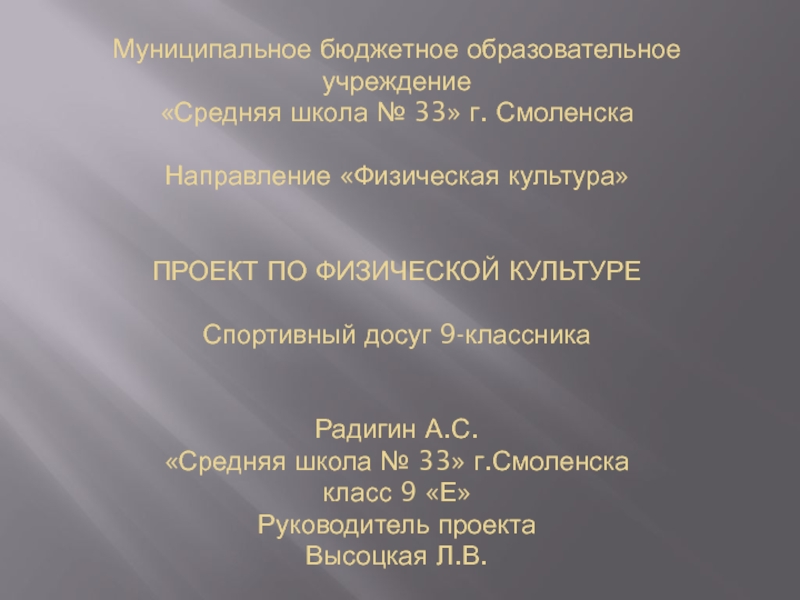Разделы презентаций
- Разное
- Английский язык
- Астрономия
- Алгебра
- Биология
- География
- Геометрия
- Детские презентации
- Информатика
- История
- Литература
- Математика
- Медицина
- Менеджмент
- Музыка
- МХК
- Немецкий язык
- ОБЖ
- Обществознание
- Окружающий мир
- Педагогика
- Русский язык
- Технология
- Физика
- Философия
- Химия
- Шаблоны, картинки для презентаций
- Экология
- Экономика
- Юриспруденция
Name:Ahmed Mohamed fathy abouwarda Group:19lc2a
Содержание
- 1. Name:Ahmed Mohamed fathy abouwarda Group:19lc2a
- 2. Charles Richard Drew (June 3, 1904 –
- 3. Слайд 3
- 4. Charles Drew's 1922 Dunbar High School yearbook
- 5. Blood for BritainIn late 1940, before the
- 6. American Red Cross Blood BankOut of Drew's
- 7. Personal lifeMinnie Lenore Robbins with NIH Director,
- 8. with three other black physicians. Drew was
- 9. County, Virginia, as a National Historic Landmark
- 10. Michigan State University, East Lansing, Michigan[27]Charles Drew
- 11. Charles R. Drew Middle School Lincoln Alabama
- 12. TexasDr. Charles Drew Elementary School, San Francisco,
- 13. Скачать презентанцию
Charles Richard Drew (June 3, 1904 – April 1, 1950) was an American surgeon and medical researcher. He researched in the field of blood transfusions, developing improved techniques for blood storage,
Слайды и текст этой презентации
Слайд 4Charles Drew's 1922 Dunbar High School yearbook entry.
Drew was born
in 1904 into an African-American middle- class family in Washington,
D.C. His father, Richard, was a carpet layer[3] and his mother, Nora Burrell, trained as a teacher.[4] to Drew and three of his four younger siblings grew up in Washington's largely middle-class and interracial Foggy Bottom neighborhood.[4] From 1920 until his marriage in 1939, Drew's permanent address was in Arlington County, Virginia,[5] although he graduated from Washington's Dunbar High School in 1922 and usually resided elsewhere during that period of time.Drew won an athletics scholarship to Amherst College in Massachusetts,[7] from which he graduated in 1926.[8] An outstanding athlete at Amherst,[9] Drew also joined Omega Psi Phi fraternity as an off-campus member; Amherst fraternities did not admit blacks at that time.[10] After college, Drew spent two years (1926–1928) as a professor of chemistry and biology, the first athletic director, and football coach at the historically black private Morgan College in Baltimore, Maryland, to earn the money to pay for medical school.
Слайд 5Blood for Britain
In late 1940, before the U.S. entered World
War II and just after earning his doctorate, Drew was
recruited by John Scudder to help set up and administer an early prototype program for blood storage and preservation. He was to collect, test, and transport large quantities of blood plasma for distribution in the United Kingdom.[15] Drew went to New York City as the medical director of the United States' Blood for Britain project. The Blood for Britain project was a project to aid British soldiers and civilians by giving U.S. blood to the United Kingdom.Drew started what would be later known as bloodmobiles, which were trucks containing refrigerators of stored blood; this allowed for greater mobility in terms of transportation as well as prospective donations.
Drew created a central location for the blood collection process where donors could go to give blood. He made sure all blood plasma was tested before it was shipped out. He ensured that only skilled personnel handled blood plasma to avoid the possibility of contamination. The Blood for Britain program operated successfully for five months, with total collections of almost 15,000 people donating blood, and with over 5,500 vials of blood plasma.[15] As a result, the Blood Transfusion Betterment Association applauded Drew for his work.
Слайд 6American Red Cross Blood Bank
Out of Drew's work, he was
appointed director of the first American Red Cross Blood Bank
in February 1941. The blood bank being in charge of blood for use by the U.S. Army and Navy, he disagreed with the exclusion of the blood of African-Americans from plasma-supply networks. In 1942, Drew resigned from his posts after the armed forces ruled that the blood of African-Americans would be accepted but would have to be stored separately from that of whites.Academic career
In 1941, Drew's distinction in his profession was recognized when he became the first African-American surgeon selected to serve as an examiner on the American Board of Surgery.
Drew had a lengthy research and teaching career, returning to Freedman's Hospital and Howard University as a surgeon and professor of medicine in 1942. He was awarded the Spingarn Medal by the NAACP in 1944 for his work on the British and American projects. He was given an honorary doctor of science degree, first by Virginia State College in 1945 then by Amherst in 1947.
Слайд 7Personal life
Minnie Lenore Robbins with NIH Director, Donald Frederickson, unveiling
of bust and exhibit of her husband, 1981
In 1939, Drew
married Minnie Lenore Robbins, a professor of home economics at Spelman College in Atlanta, Georgia, whom he had met earlier during that year.[18] They had three daughters and a son.[4] His daughter Charlene Drew Jarvis served on Council of the District of Columbia from 1979 to 2000, was the president of Southeastern University from 1996 until 2009 and was a president of the District of Columbia Chamber of Commerce.Death
Beginning in 1939, Drew traveled to Tuskegee, Alabama to attend the annual free clinic at the John A. Andrew Memorial Hospital.[20] For the 1950 Tuskegee clinic, Drew drove along
Слайд 8with three other black physicians. Drew was driving around 8
a.m. on April 1. Still fatigued from spending the night
before in the operating theater, he lost control of the vehicle. After careening into a field, the car somersaulted three times. The three other physicians suffered minor injuries. Drew was trapped with serious wounds; his foot had become wedged beneath the brake pedal. When reached by emergency technicians, he was in shock and barely alive due to severe leg injuries.Drew was taken to Alamance General Hospital in Burlington, North Carolina.[21] He was pronounced dead a half hour after he first received medical attention. Drew's funeral was held on April 5, 1950, at the Nineteenth Street Baptist Church in Washington, D.C.
Despite a popular myth to the contrary, once repeated on an episode ("Dear Dad... Three") of the hit TV series M*A*S*H, Drew's death was not the result of his having been refused a blood transfusion because of his skin color. This myth spread very quickly since during his time it was very common for blacks to be refused treatment because there were not enough "Negro beds" available or the nearest hospital only serviced whites. In truth, according to one of the passengers in Drew's car, John Ford, Drew's injuries were so severe that virtually nothing could have been done to save him. Ford added that a blood transfusion might have actually killed Drew sooner.
Legacy
In 1976, the National Park Service designated the Charles Richard Drew House in Arlington
Слайд 9County, Virginia, as a National Historic Landmark in response to
a nomination by the Afro-American Bicentennial Corporation.[5]
In 1981, the United
States Postal Service issued a 35¢ postage stamp in its Great Americans series to honor Drew.Charles Richard Drew Memorial Bridge, spanning the Edgewood and Brookland neighborhoods in Washington, D.C.[24]
USNS Charles Drew, a dry cargo ship of the United States Navy
Parc Charles-Drew, in Le Sud-Ouest, Montreal, Quebec, Canada
In 2002, scholar Molefi Kete Asante listed Drew as one of the 100 Greatest African Americans.[25]
Numerous schools and health-related facilities, as well as other institutions, have been named in honor of Dr. Drew.
Medical and higher education
In 1966, the Charles R. Drew Postgraduate Medical School was incorporated in California and was named in his honor. This later became the Charles R. Drew University of Medicine and Science.
Charles Drew Health Center, Omaha, Nebraska[26]
Charles Drew Science Enrichment Laboratory,
Слайд 10Michigan State University, East Lansing, Michigan[27]
Charles Drew Health Foundation, East
Palo Alto, California, 1960s-2000, was the community's only clinic for
decades.Charles Drew Community Health Center, located in Burlington, NC near the site of the old Alamance County hospital.
Charles Drew Pre-Health Society, University of Rochester
Charles R Drew Wellness Center in Columbia, South Carolina[28]
Charles R. Drew Hall, an all-male freshman dorm at Howard University, Washington D.C.[29]
Charles Drew Memorial Cultural House, residence at Amherst College, his alma mater[30]
Charles Drew Premedical Society at Columbia University, New York[31]
K-12 schools
Charles R. Drew Middle School & Magnet school for the gifted, opened 1966 Los Angeles Unified School District https://drew-lausd- ca.schoolloop.com/
Слайд 11Charles R. Drew Middle School Lincoln Alabama operated by Talladega
County Schools
Charles R. Drew Junior High School, Detroit, Michigan
Dr. Charles
R. Drew Science Magnet School, Buffalo, NYCharles R. Drew Elementary School, Miami Beach[32] and Pompano Beach, Florida[33]
Bluford Drew Jemison S.T.E.M Academy, Baltimore[34] (closed in 2013)[35]
Bluford Drew Jemison STEM Academy West, a Middle/High School in Baltimore, Maryland
Dr. Charles R. Drew Elementary School, Colesville, Maryland[36]
Charles Drew Elementary School, Washington, DC
Charles R. Drew Elementary School, Arlington, Virginia
Dr. Charles Drew Elementary School, New Orleans, LA
Charles R. Drew Charter School opened in August 2000 as the first charter school in Atlanta, Georgia. This is the setting for the 2015 Movie Project Almanac.
Dr. Charles Drew Academy, Ecorse, MI
Charles R. Drew Intermediate School, Crosby,
Слайд 12Texas
Dr. Charles Drew Elementary School, San Francisco, Ca.
Charles Richard Drew
Intermediate School / Charles Richard Drew Educational Campus, Bronx, New
York
References
Ref1
Ref2
Ref3
Ref4
Ref5
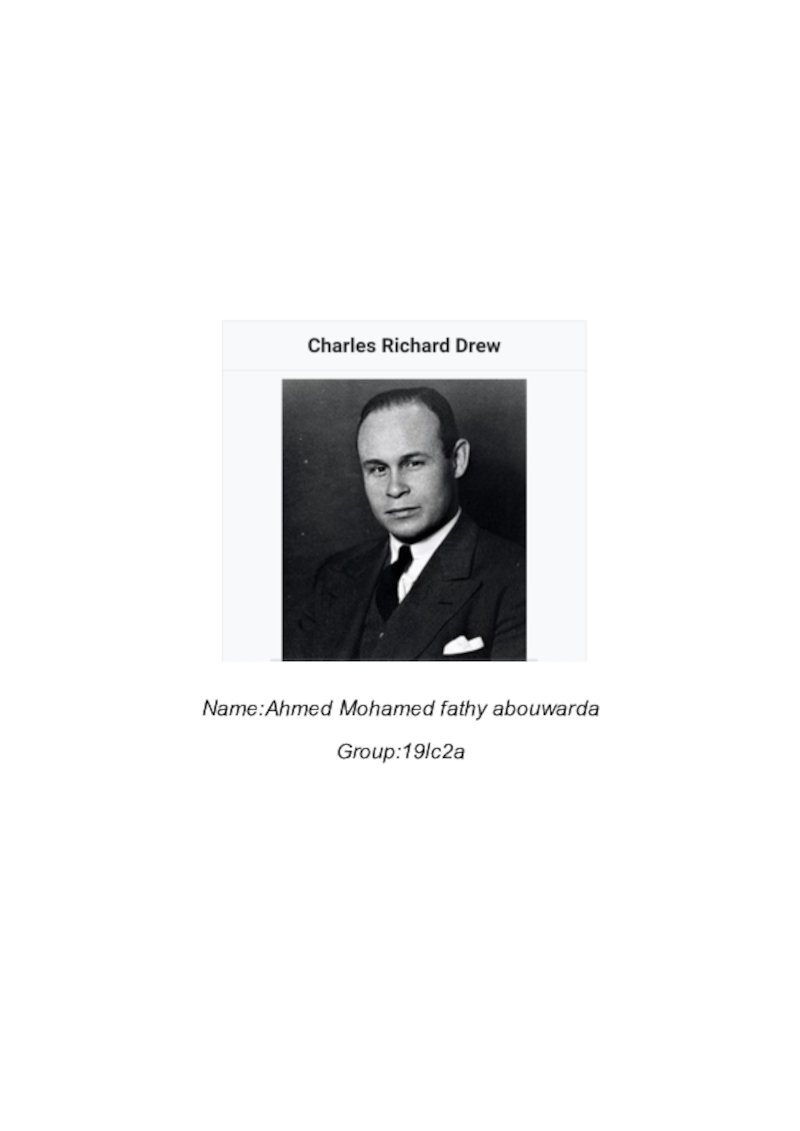
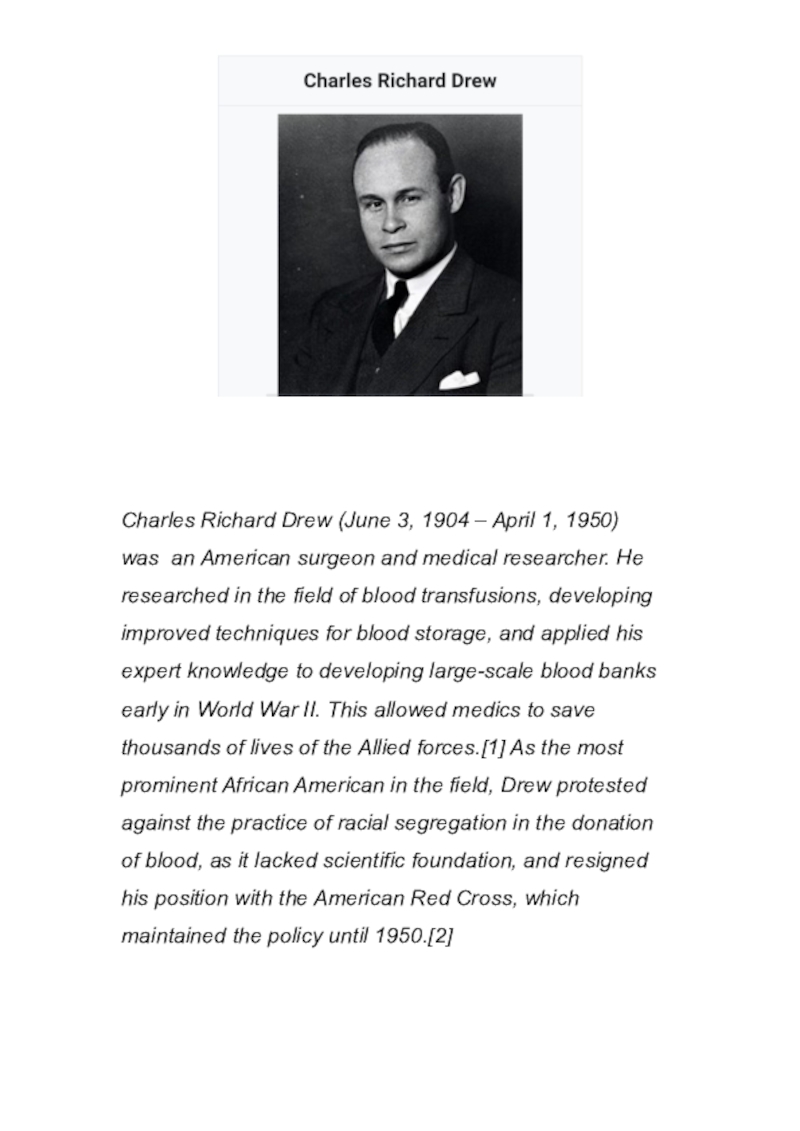
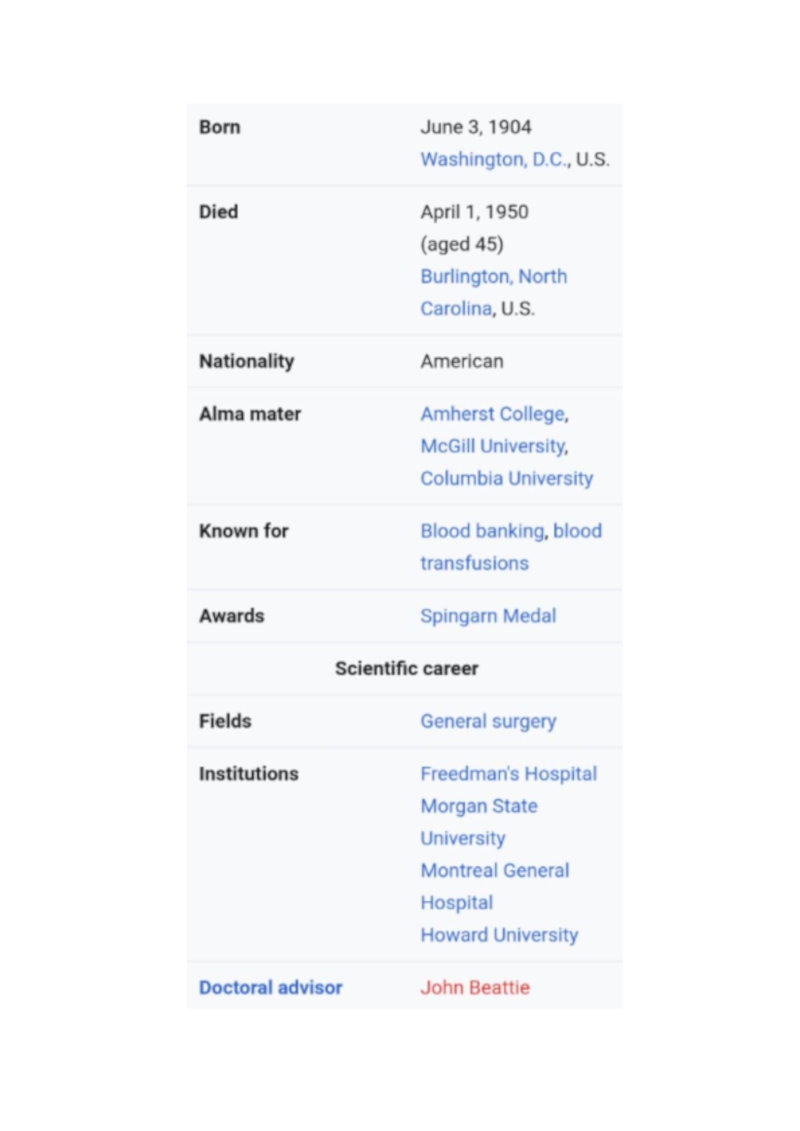
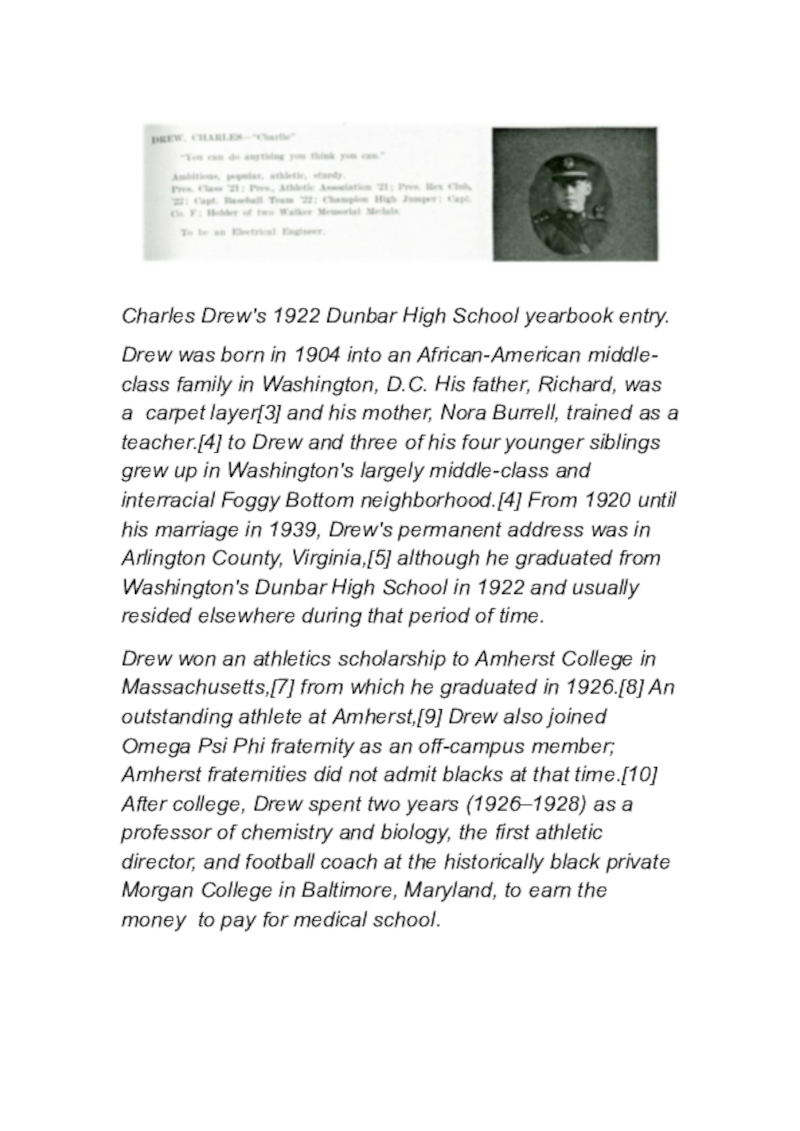
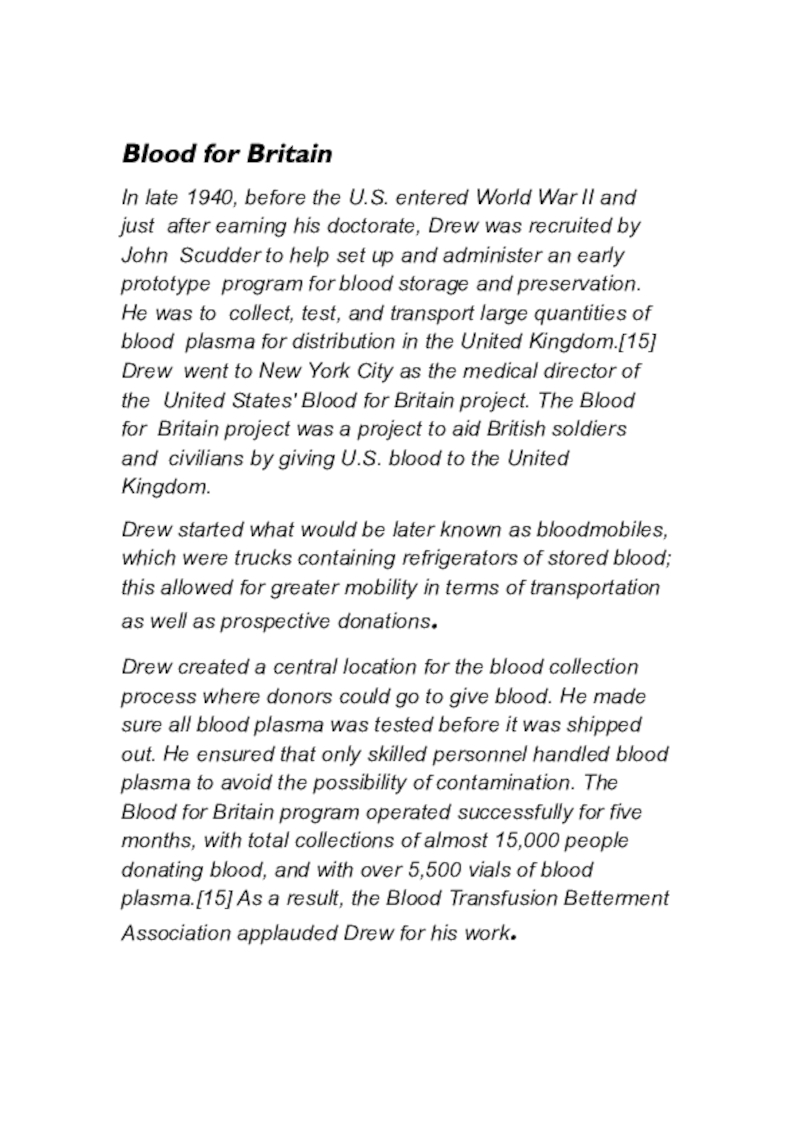
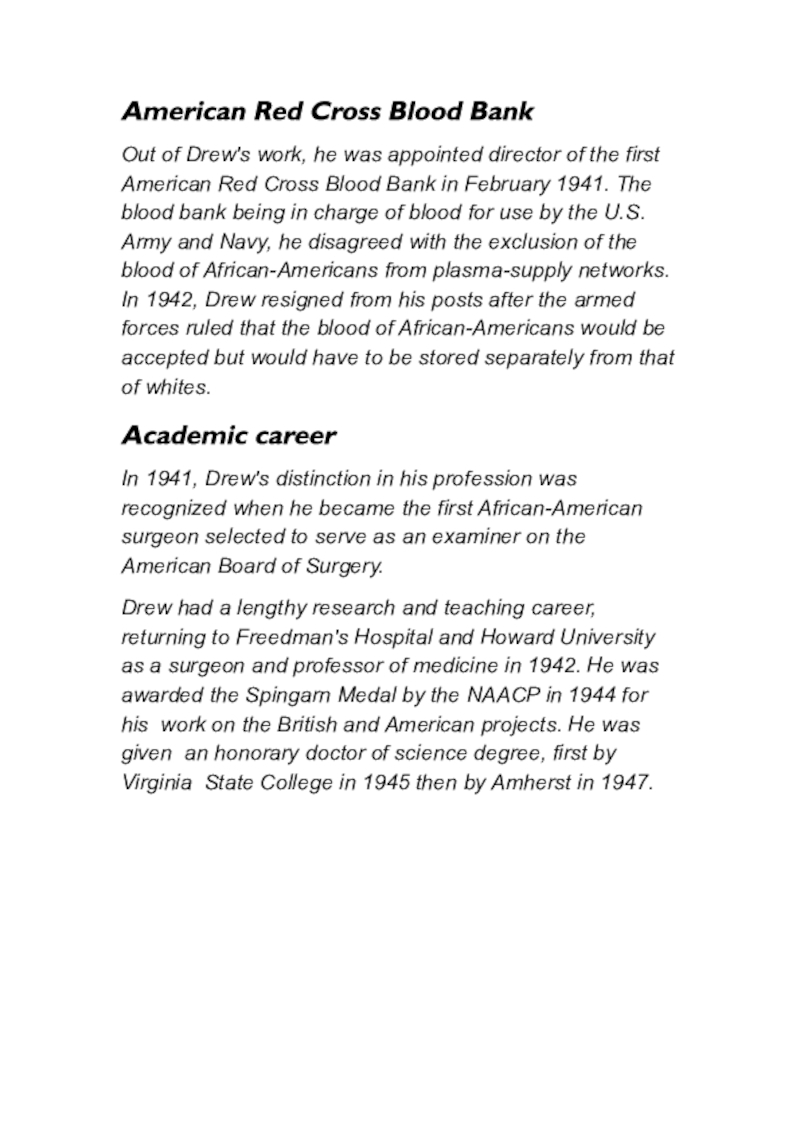
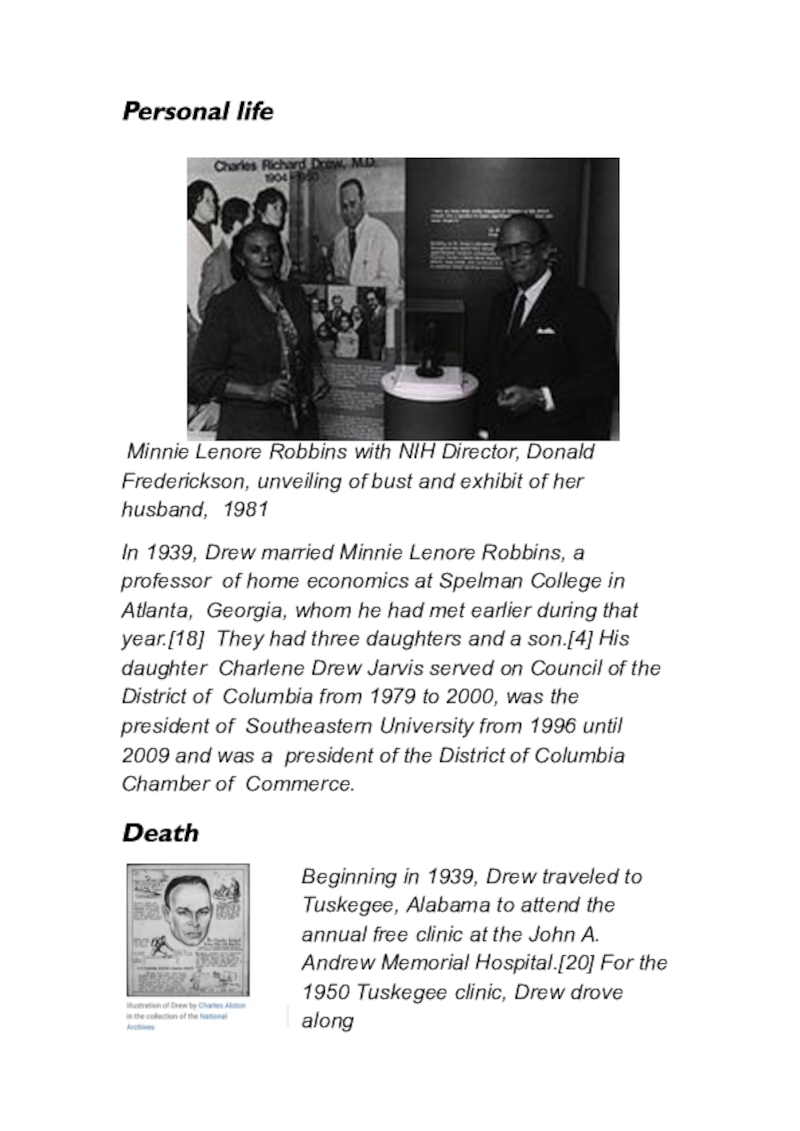
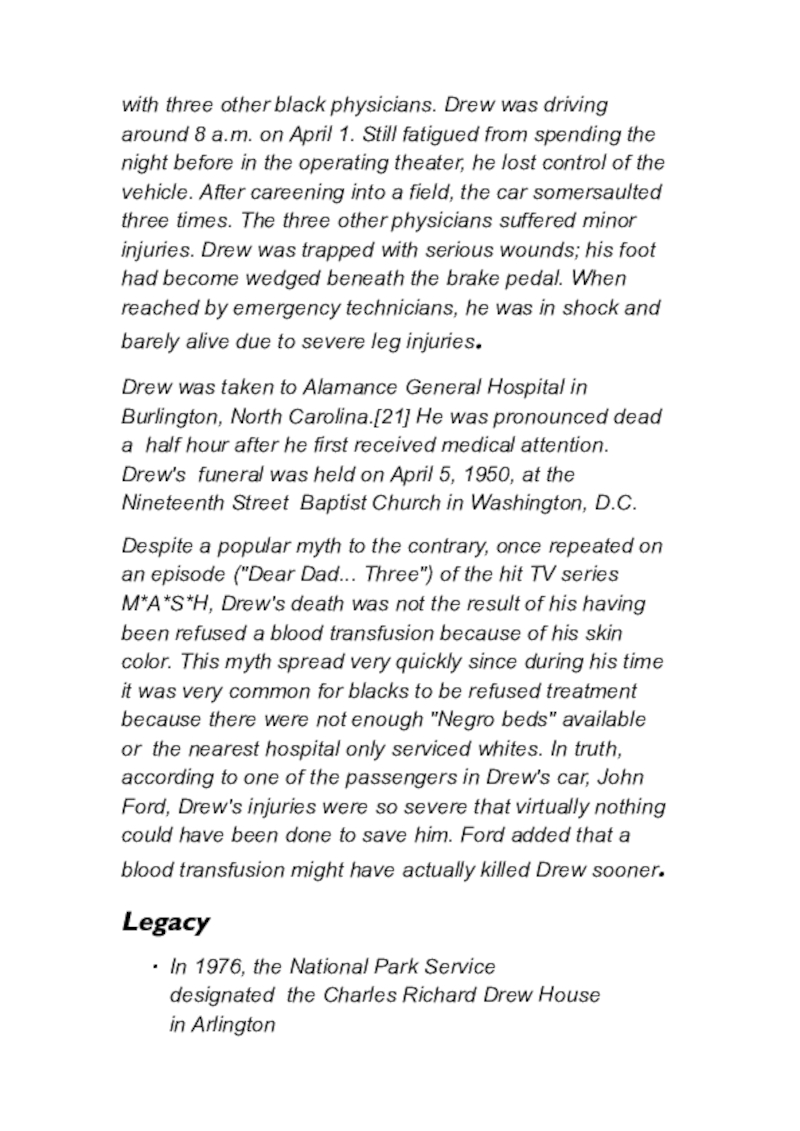
![Name:Ahmed Mohamed fathy abouwarda
Group:19lc2a County, Virginia, as a National Historic Landmark in response to a County, Virginia, as a National Historic Landmark in response to a nomination by the Afro-American Bicentennial Corporation.[5]In](/img/tmb/7/603223/965a594799117ed03951b0208c0b8310-800x.jpg)
![Name:Ahmed Mohamed fathy abouwarda
Group:19lc2a Michigan State University, East Lansing, Michigan[27]Charles Drew Health Foundation, East Palo Michigan State University, East Lansing, Michigan[27]Charles Drew Health Foundation, East Palo Alto, California, 1960s-2000, was the community's](/img/tmb/7/603223/ae134aa3b531922230c80e732ded9073-800x.jpg)
